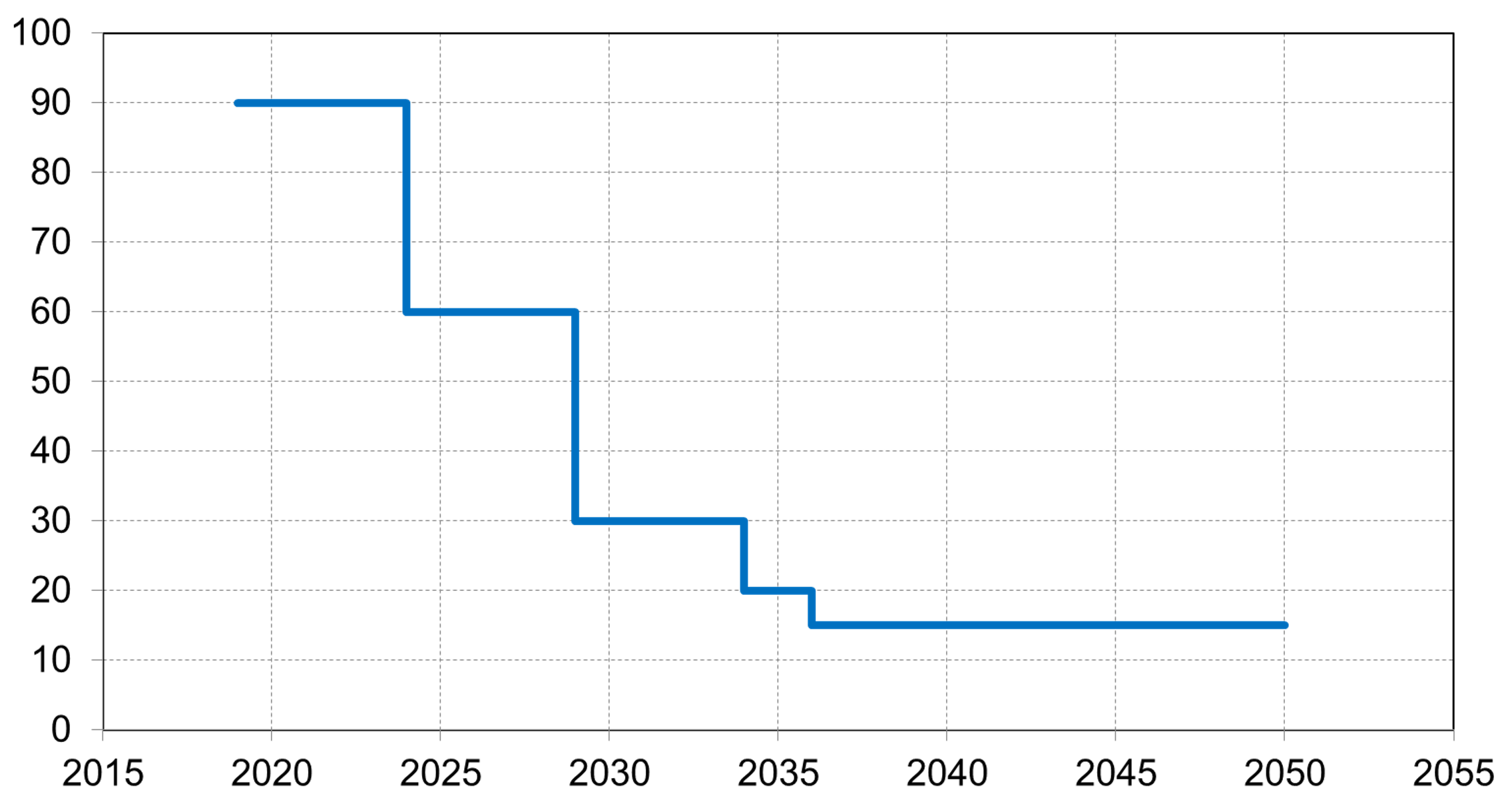USA AIM Act and EPA Rules
In 2020 the American Innovation and Manufacturing Act (AIM) committed the US EPA to reducing HFC. The USA has ratified the Montreal Protocol Kigali Amendment and established a phase-down schedule according to the standard member schedule, targeting 85% reduction by 2036.

EPA final rule October 2023
This rule limits the use of higher GWP HFC in new products and equipment, including systems for refrigeration, air conditioning and heat pumps. A reporting system and a labelling requirement is introduced for HFC. Refrigerants allowed for defined applications are listed in SNAP rules.
Source: www.epa.gov/climate-hfcs-reduction/final-rule-phasedown-hydrofluorocarbons-establishing-allowance-allocation
EPA introduced some specific definitions:
- Products leave a factory functional and with refrigerant charge.
- The compliance date refers to the manufacturing date or import. It must be sold, distributed or exported within 3 years of this date. A condensing unit is not a product.
- Systems are assembled and charged in the field by a technician. New systems also include
- increasing system cooling capacity,
- replacing 75 % or more of the number of evaporators,
- replacing 100 % of the compressors and condensers.
- Components are pieces of equipment assembled to make a functional system.
- Specified components refer to condensing units, condensers, compressors, evaporate units and evaporators.
Summary table of restricted new products and systems (simplified vs. EPA fact sheet):
Product / system type | GWP limit | Year |
|---|---|---|
Commercial refrigeration | ||
Retail food refrigeration – supermarket systems | ||
System charge ≥200 lb except cascades | 150 | 2027 |
System charge <200 lb | 300 | 2027 |
High temp side of cascade system | 300 | 2027 |
Retail food refrigeration – condensing unit systems | ||
System charge ≥200 lb except cascades | 150 | 2026 |
System charge <200 lb | 300 | 2026 |
High temp side of cascade system | 300 | 2026 |
Retail food – refrigeration stand-alone units | 150 | 2025 |
Industrial process refrigeration except chillers | ||
Product / system charge ≥200 lb + refrigerant temp >-22°F, except cascades | 150 | 2026 |
Product / system charge <200 lb + refrigerant temp >-22°F | 300 | 2026 |
High temp side of cascade system + refrigerant temp >-22°F | 300 | 2026 |
Refrigerant temp. -58°F≤ t ≤-22°F | 700 | 2028 |
Refrigerant temp. <-58°F | not covered | not covered |
Cold storage warehouses | ||
System charge ≥200 lb except cascades | 150 | 2026 |
System charge <200 lb | 300 | 2026 |
High temp side of cascade system | 300 | 2026 |
Chillers | ||
Fluid exiting chiller <-58°F | not covered | not covered |
Fluid exiting chiller -58°F≤ t ≤-22°F | 700 | 2028 |
Fluid exiting chiller >-22°F | 700 | 2026 |
Comfort cooling | 700 | 2025 |
Ice rinks incl. non chillers | 700 | 2025 |
Stationary AC and HP | ||
Residential and light commercial AC and heat pumps / systems | 700 | 2025 |
Variable refrigerant flow systems | 700 | 2026 |
Data centers, computer rooms, AC + IT equipment cooling | ||
Data centers, computer rooms, AC + IT equipment cooling | 700 | 2027 |
Refrigerated transport | ||
Containers with refrigerant temp. <-58°F | not covered | not covered |
Containers with refrigerant temp. ≥-58°F | 700 | 2025 |
Motor vehicle AC | ||
Light duty passenger vehicles | 150 | Model year 2025 |
Medium duty passenger vehicles, heavy duty pick-up trucks, vans | 150 | Model year 2028 |
Listed nonroad vehicles | 150 | 2028 |
Refrigerant temp. is defined as the temperature entering the evaporator.
200 lb equals 90,7 kg
-22°F equals -30°C
-58°F equals -50°C
California Air Resources Board (CARB)
Member States of the USA are allowed to establish stricter rules for environmental protection. The CARB Refrigerant Management Program (RMP) focuses on reducing greenhouse gas emissions in stationary refrigeration and air conditioning systems. It sets up specific requirements for reports and repairs.
The Senate Bill 1206 of 2022-09 restricts sales and distribution of virgin bulk HFC refrigerants based on their GWP:
- GWP >2200 by 2025-01-01
- GWP >1500 by 2030-01-01
- GWP >750 by 2033-01-01
For service and replenishment on stationary equipment owned or operated by the state, HFC with GWP>750, which are not reclaimed, shall no longer be utilized.
CARB classifies the GWP of refrigerants as:
- high GWP ≥150 and all ozone depleting substances
- low GWP <150
- ultra-low GWP <10
Source: ww2.arb.ca.gov/our-work/programs/refrigerant-management-program
ww2.arb.ca.gov/our-work/programs/sb-1206